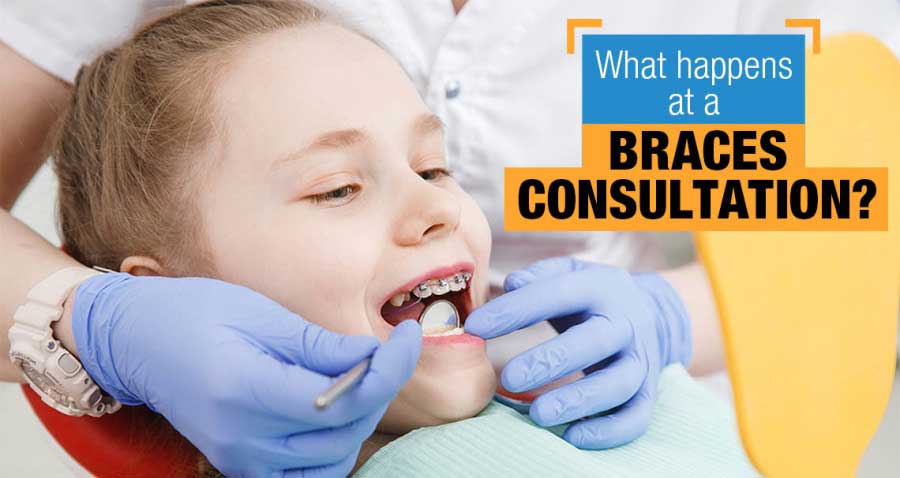Discovering the Right Cumming Orthodontist for Your Braces and Aligners Demands
Wiki Article
Comprehensive Guide to Orthodontics Procedures for Correcting Oral Imbalances
In the world of orthodontics, the journey to achieving a completely lined up smile involves a myriad of procedures tailored to correct dental misalignments. From conventional dental braces to invisible aligners and also surgical choices, the area of orthodontics supplies a range of services to attend to varying levels of dental abnormalities. Recognizing the ins and outs of each procedure, including their devices, advantages, and possible downsides, is crucial in making informed choices concerning one's orthodontic treatment. As we navigate with the comprehensive overview to orthodontic treatments for fixing oral imbalances, the elaborate information of each approach will unravel, losing light on the path toward a harmonious and functional oral positioning.Orthodontic Procedures Overview

Regular adjustments and tracking are vital components of orthodontic treatment to guarantee progress is on track and to make any type of needed modifications along the way. By undertaking orthodontic procedures, individuals can not just achieve a straighter smile but likewise improve their total dental wellness and feature.
Standard Dental Braces: Exactly How They Function
When considering orthodontic treatments for oral misalignments, conventional braces attract attention as a time-tested approach for fixing teeth positioning. Conventional dental braces are composed of brackets, cords, and bands that interact to use constant stress on the teeth, slowly moving them into the preferred alignment. The brackets are affixed to the teeth using a special adhesive, and the wires are threaded via the brackets. By changing the stress of the cables, orthodontists can control the direction and pressure applied to each tooth, directing them into correct alignment with time.
As pressure is used to the teeth with the braces, the bone bordering the teeth is improved to support the new tooth placements. Individuals will certainly need normal changes at the orthodontist's workplace to make sure the braces proceed to apply the proper stress for effective teeth motion.
Undetectable Aligners: Benefits And Drawbacks
Invisible aligners provide a hassle-free and very discreet alternative to conventional dental braces for dealing with dental misalignments. These clear, tailor-made trays are virtually unseen when put on, making them an appealing choice for individuals seeking an extra visually pleasing orthodontic treatment. One of the main benefits of unseen aligners is their removability, permitting for less complicated upkeep of dental hygiene contrasted to typical dental braces. People can eliminate the aligners prior to consuming or brushing their teeth, reducing the risk of food obtaining stuck in the home appliance and streamlining the cleaning process.
Surgical Orthodontic Options
Surgical treatments in orthodontics present viable alternatives for dealing with complex oral imbalances that might not be effectively settled with traditional orthodontic treatments. While traditional dental braces and undetectable aligners can fix lots of orthodontic concerns, certain instances need medical intervention to accomplish optimal results. Surgical orthodontic alternatives are usually suggested for extreme malocclusions, considerable jaw disparities, and instances where the underlying bone framework needs modification to achieve appropriate positioning.One typical medical orthodontic procedure is orthognathic surgery, which entails repositioning the jaws to remedy useful issues such as trouble speaking or chewing. This surgical treatment is typically done in partnership with an orthodontist who helps line up the teeth prior to and after the procedure. Surgical orthodontics might also include procedures to expose affected teeth, eliminate excess periodontal cells, or improve the jawbone to create a more unified face profile.
Prior to thinking about surgical orthodontic choices, individuals go through a thorough assessment to identify the necessity and possible advantages of such interventions. aligners. While surgical her explanation procedure may appear overwhelming, it can substantially improve both the function and looks of the smile in situations where conventional orthodontic therapies drop short
Retainers and Post-Treatment Treatment

Post-treatment care entails adhering to the orthodontist's directions faithfully. This may consist of proper dental hygiene practices, going to follow-up consultations, and wearing the retainers as prescribed. Failure to follow post-treatment treatment directions can result in relapse, where the teeth progressively return in the direction of their initial positions. Regular retainer wear, good oral hygiene, and normal oral check-ups are crucial for keeping the results attained through orthodontic surgery and guaranteeing the long-lasting security of the remedied dental placement.
Final Thought
In verdict, orthodontic procedures offer various choices for dealing with dental imbalances. Surgical orthodontic options are offered for a lot This Site more severe imbalances. Overall, orthodontic treatments can effectively enhance dental wellness and visual appearance.As we browse through the comprehensive overview to orthodontic procedures for correcting dental imbalances, the complex information of each approach will certainly unfold, losing light on the path toward a harmonious and practical oral placement. - cumming orthodontics
One of the most usual orthodontic treatments is the use of dental braces, which are composed of steel brackets and cords that apply mild pressure to gradually move teeth right into the preferred setting.When taking into consideration orthodontic therapies for dental imbalances, conventional braces stand out as a time-tested method for correcting teeth positioning. Additionally, invisible aligners might not be suitable for complicated orthodontic concerns that need more substantial teeth activity, as they are usually recommended for moderate to moderate cases. Retainers are personalized orthodontic gadgets made to hold teeth in their remedied settings after the conclusion of orthodontic therapy.
Report this wiki page